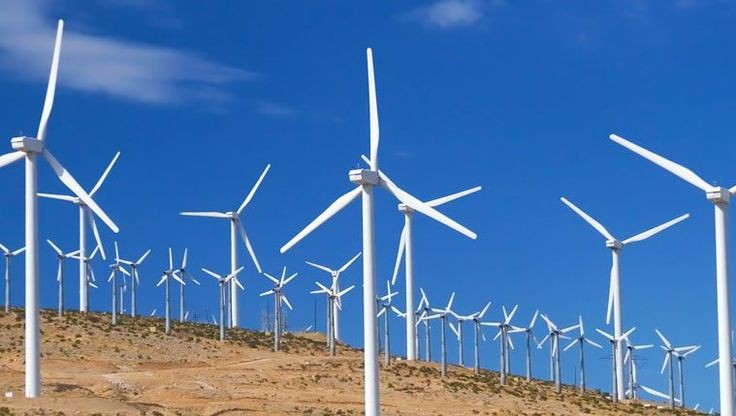Tanzania, like much of sub-Saharan Africa, stands at a crossroads in its energy future.
The country’s growing population and economy demand more energy, yet the impacts of climate change are making traditional energy sources increasingly untenable.
In this context, renewable energy emerges as not only an opportunity but a necessity for Tanzania’s sustainable development.
The effects of climate change in Tanzania are becoming more pronounced, with rising temperatures, unpredictable rainfall patterns, and frequent droughts.
These changes have far-reaching implications, particularly for the energy sector. Hydropower, which accounts for about 35% of Tanzania’s electricity generation, is highly vulnerable to fluctuating water levels caused by droughts.
This vulnerability has led to frequent power shortages and blackouts, which disrupt economic activities and hinder the country’s development.
At the same time, the reliance on biomass, particularly wood and charcoal, for cooking and heating in rural areas leads to deforestation and environmental degradation.
This not only exacerbates climate change but also causes health problems due to indoor air pollution.
As the population grows, the pressure on these traditional energy sources will only increase, further straining Tanzania’s natural resources.
Tanzania’s response to the challenge
In response to these challenges, Tanzania has begun to explore the potential of renewable energy sources such as solar, wind, and geothermal power.
The country’s geographical location provides it with abundant sunshine and wind, particularly in regions like Dodoma and Singida, which are ideal for large-scale solar and wind farms. Geothermal energy also holds promise, particularly in the Rift Valley region, where underground heat sources can be harnessed to generate electricity.
The Tanzanian government has recognized the importance of renewable energy and has taken steps to promote its development.
The National Energy Policy, revised in 2015, outlines the government’s commitment to increasing the share of renewable energy in the national energy mix.
Additionally, the Rural Energy Agency (REA) is actively working to extend access to electricity in rural areas through off-grid renewable energy solutions.
One of the key projects in Tanzania’s renewable energy landscape is the Mtwara Wind Power Project, which aims to provide clean and reliable electricity to the southern regions of the country.
This project, supported by both government and international donors, is expected to not only improve energy access but also reduce greenhouse gas emissions by displacing diesel-based power generation.
Another initiative is the development of small-scale solar power systems in rural areas.
These systems, often installed on the roofs of homes and schools, provide a cost-effective way to bring electricity to communities that are not connected to the national grid.
The success of these solar projects has spurred interest from private investors and NGOs, who see renewable energy as a viable solution to Tanzania’s energy challenges.
Challenges to overcome
There remain significant barriers to the widespread adoption of renewable energy in Tanzania.
One of the main challenges is the high upfront cost of renewable energy technologies, which can be prohibitive for both the government and private investors.
Access to finance remains a major hurdle, particularly for small and medium-sized enterprises (SMEs) that are crucial for driving innovation in the renewable energy sector.
To overcome these challenges, there is a need for greater financial support from both domestic and international sources. The Green Climate Fund (GCF) and other climate financing mechanisms offer opportunities for Tanzania to access the funding needed to scale up its renewable energy projects.
Additionally, the government can incentivize private investment in renewable energy through tax breaks, subsidies, and favourable regulatory frameworks.
Another challenge is the lack of technical expertise and capacity in the renewable energy sector.
To address this, Tanzania must invest in education and training programs that build the skills needed to design, install, and maintain renewable energy systems.
Partnerships with international organizations and academic institutions can help bridge this gap by providing technical assistance and knowledge transfer.
The role of NGOs
The role of non-governmental organizations (NGOs) and civil society is also critical in advancing renewable energy in Tanzania.
Organizations like the Tanzania Renewable Energy Association (TAREA) and the World Wide Fund for Nature (WWF) are actively involved in advocating for renewable energy and supporting community-based initiatives.
These organizations play a key role in raising awareness about the benefits of renewable energy and in driving grassroots demand for clean energy solutions. In addition to these efforts, it is important to consider the social and economic impacts of renewable energy development.
Renewable energy projects should be designed in a way that benefits local communities, creates jobs, and promotes inclusive growth.
This includes ensuring that women, who are often the primary users of energy in households, are actively involved in decision-making related to energy projects.
Tanzania’s transition to renewable energy also has the potential to strengthen its position in regional energy markets.
By developing its renewable energy resources, Tanzania can become a net exporter of clean energy to neighbouring countries, thereby enhancing regional energy security and cooperation.
The East African Power Pool (EAPP) initiative, which aims to integrate the electricity grids of East African countries, provides a platform for Tanzania to share its renewable energy potential with the region.
Conclusion
In conclusion, renewable energy offers a transformative opportunity for Tanzania to address its energy challenges while combating climate change.
By harnessing its abundant natural resources, Tanzania can build a sustainable and resilient energy system that supports economic growth, reduces poverty, and protects the environment.
However, realizing this potential requires concerted efforts from the government, private sector, civil society, and international partners.
With the right policies and investments, Tanzania can lead the way in Africa’s renewable energy revolution and set an example for other countries to follow.


